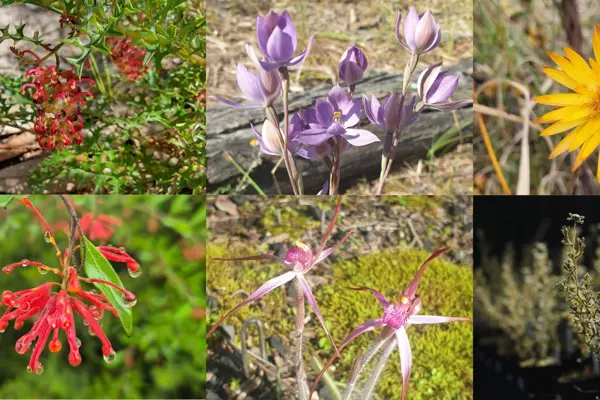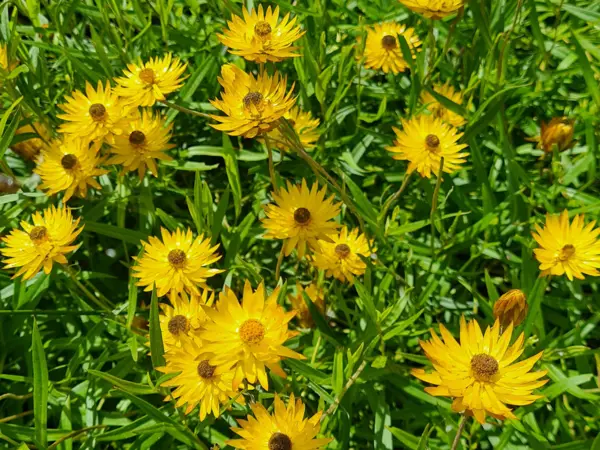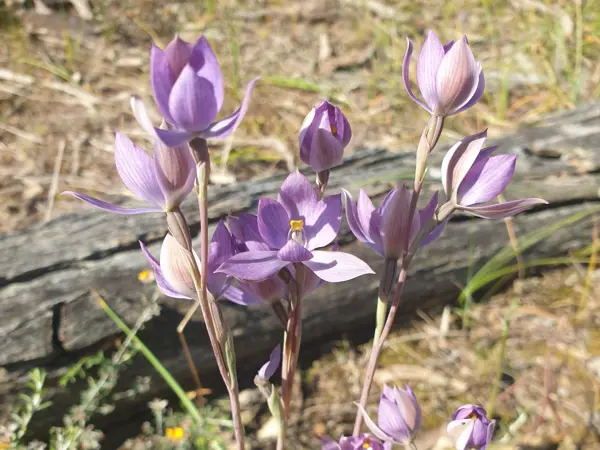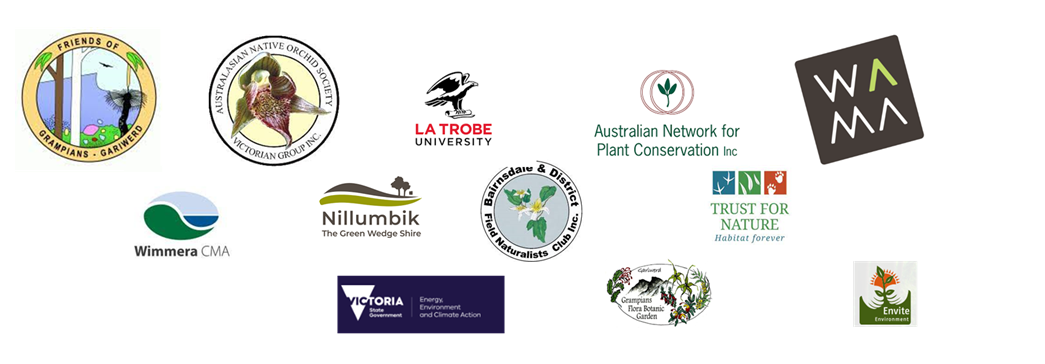
Preventing the extinction of Victoria's threatened flora
Thanks to funding from the Department of Energy, Environment and Climate Action’s Nature Fund, Royal Botanic Gardens Victoria is leading research to conserve 24 threatened Victorian plant species as part of the Preventing the extinction of Victoria's threatened flora project.
The Preventing the extinction of Victoria’s threatened flora project is led by Royal Botanic Gardens Victoria in partnership with La Trobe University, Australian Network for Plant Conservation, DEECA, Trust for Nature, Wimmera Catchment Management Authority, Nillumbik Shire, ENVITE, Bairnsdale & District Field Naturalists Club, Friends of the Grampians Gariwerd, WAMA Botanic Gardens, Halls Gap Botanic Gardens and the Australasian Native Orchid Society Victorian Branch.
About the project

Victoria's Threatened Plant Species
In Victoria, 1,617 of our plant species are listed as threatened with extinction based on IUCN criteria. The Preventing the extinction of Victoria’s threatened flora program aims to reverse this trend by integrating a whole of lifecycle approach to the conservation and re-establishment of plants into the wild through translocation.
For each threatened species we will:
- Undertake community surveys and undertake genetic diversity studies to improve seed collection and propagation.
- Collect a genetically diverse array of seed.
- Identify and culture the mycorrhizal fungi and rhizobia for symbiotic propagation.
- Propagate large numbers of plants for ex situ collections for seed orcharding and conservation translocation.
- Undertake pollinator studies to inform the choice of translocation sites where the pollinators are present.
- Translocate large numbers of plants to boost existing populations and create new populations to reduce the threat of extinction.
Photo: Xerochrysum palustre, one of the threatened Victorian species that will be conserved through the program.

Project plants

Orchidaceae
The Orchidaceae with ~ 26,000 is one of the largest and most threatened plant families globally. In Victoria half of the ~400 species are threatened with extinction. All orchids require mycorrhizal fungi to germinate in the wild and often are reliant on one species of pollinator to set seed.
Nature fund species are Caladenia ancylosa, Caladenia rosella, Caladenia valida, Diuris ochroma, Pterostylis basaltica and Thelymitra mackibbinii.
Photo: Thelymitra mackibbinii.

Key actions

Propagation
The propagation of our 24 Nature Fund species provides a genetically diverse collection of plants which will be used in ex situ collections, as well as translocation projects to prevent the extinction of these species.
As many of these are new to horticulture, we are constantly accumulating knowledge and developing novel techniques, such as the use of pre form plugs for cutting material. Cuttings of rare and threatened flora collected under permit are processed in the field.
This method, pioneered by the Nursery at Cranbourne Gardens, reduces transpiration loss (drying out) as well as reducing transplant shock, when tubing struck cutting material. The material is placed in glasshouses conditions at Royal Botanic Gardens Melbourne and Cranbourne and grown on for conservation outcomes such as ex situ (in house conservation holdings) and re-introductions back into Natural areas.
Photo: Nursery propagation of Daviesia laevis, Sphaerolobium acanthos, Spyridium furculentum and Swainsona plagiotropis.

Project partners
La Trobe University, Australian Network for Plant Conservation, DEECA, Trust for Nature, Wimmera Catchment Management Authority, Nillumbik Shire, ENVITE, Bairnsdale & District Field Naturalists Club, Friends of the Grampians Gariwerd, WAMA Botanic Gardens, Halls Gap Botanic Gardens, Australasian Native Orchid Society Victorian Branch.

Project contacts
The project is led by Dr Noushka Reiter (Project CI). Principle collaborators Dr Ryan Phillips (La Trobe University), Dr Rebecca Miller (RBGV); representatives of the relevant land management agencies (DEECA, Parks Victoria, TFN and CMAs) and the partner community groups (the Australian Network for Plant Conservation, Bairnsdale & District Field Naturalists Club, Friends of the Grampians, Halls Gap Botanic Gardens, WAMA (Grampians) and the Australasian Native Orchid Society Vic Branch).
Dr Noushka Reiter – Senior Research Scientist (Conservation)
Dr Ryan Phillips – Senior Lecturer in Conservation Biology (La Trobe University)
Dr Linda Riquelme – Post-doctoral Fellow (La Trobe University)
Dr Andre Messina – Botanist
Dr Rebeca Miller – Seed Research Scientist
Dr Meg Hirst – Seed Ecologist
Dr Hong Zhang – Technical Assistant (Seedbank)
Dr Daniel Ohlsen – Botanist
Dr Tara Hopley – Research Scientist (Genetics)
Dr Laura Simmons –Research Scientist (Genetics)
Alex Mclachlan – Research Assistant
John Woodward – Technical Assistant
Rebecca Grinter – Masters student (La Trobe University)
Eamonn Culhane – Masters student (La Trobe University)
David Robbins – Team Leader (Nursery Melbourne)
Holden Sayers – Horticulturist (Nursery Melbourne)
Chris Jenek – Horticulturist (Nursery Melbourne)
Russell Larke - Senior Curator (RBGV Cranbourne)
Mandy Thomson – Team Leader (Nursery Cranbourne)
Jo Lynch – Business Manager (ANPC)
Richie Southerton – Communications Manager (ANPC)
Trent Loane - Acting Manager Horticulture (RBGV Cranbourne)
Marie Velthoven - Horticulturist Team Leader (RBGV Cranbourne)
Emily Smith - Team Leader (Nursery Cranbourne)
Sturt Gibbs - Horticulturist (Nursery Cranbourne)
Matthew Henderson - Raising Rarity Project Officer (RBGV Cranbourne)
Ali Wynne - Horticulturist (RBGV Cranbourne)
Mathieu Lascostes - Horticulturist (RBGV Cranbourne)
Mitch Burns - Horticulturist (RBGV Cranbourne)
Penny Evans - Horticulturist (RBGV Cranbourne)
Ollie Sherlock - Conservation Officer (RBGV Cranbourne)
